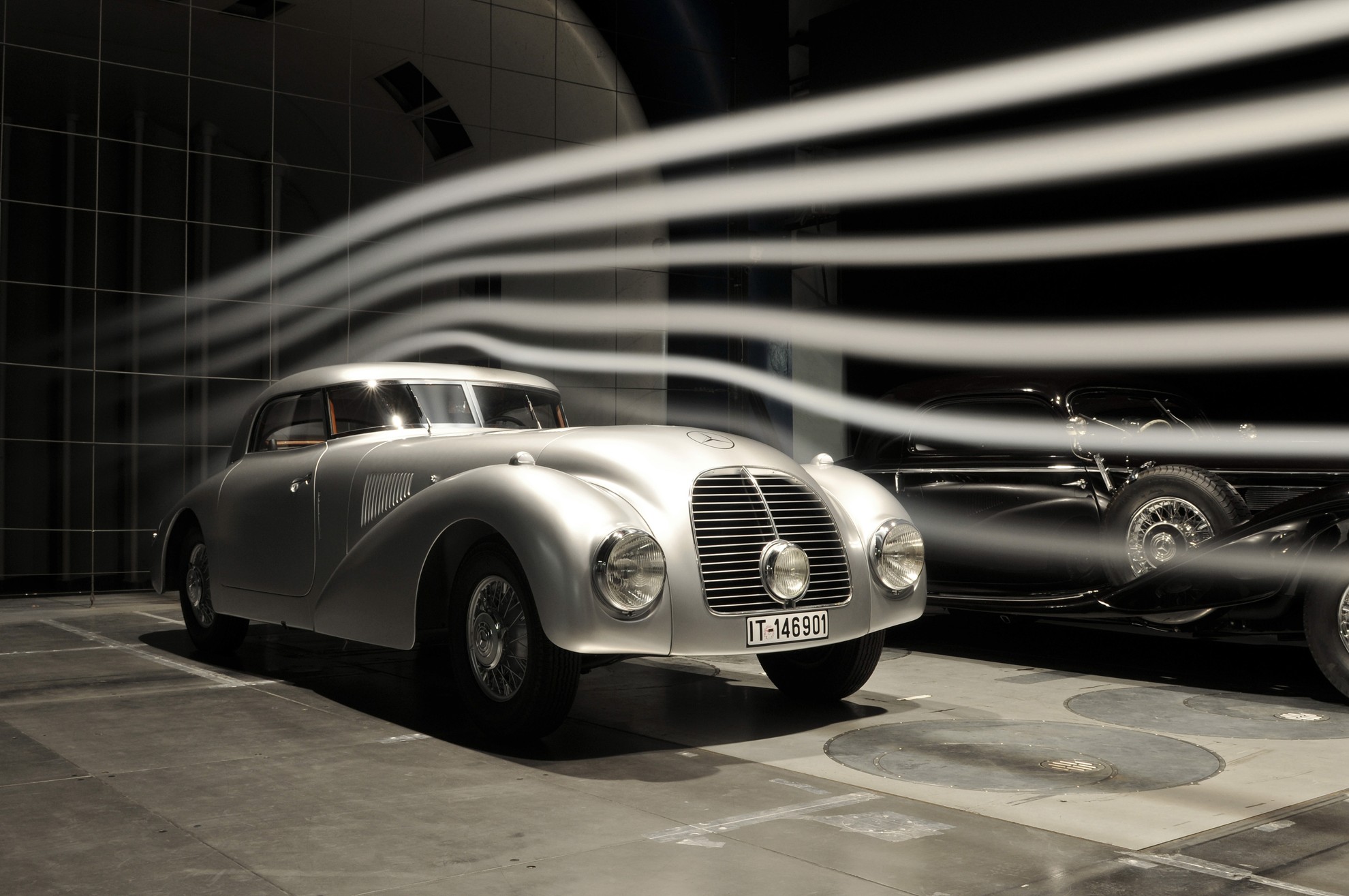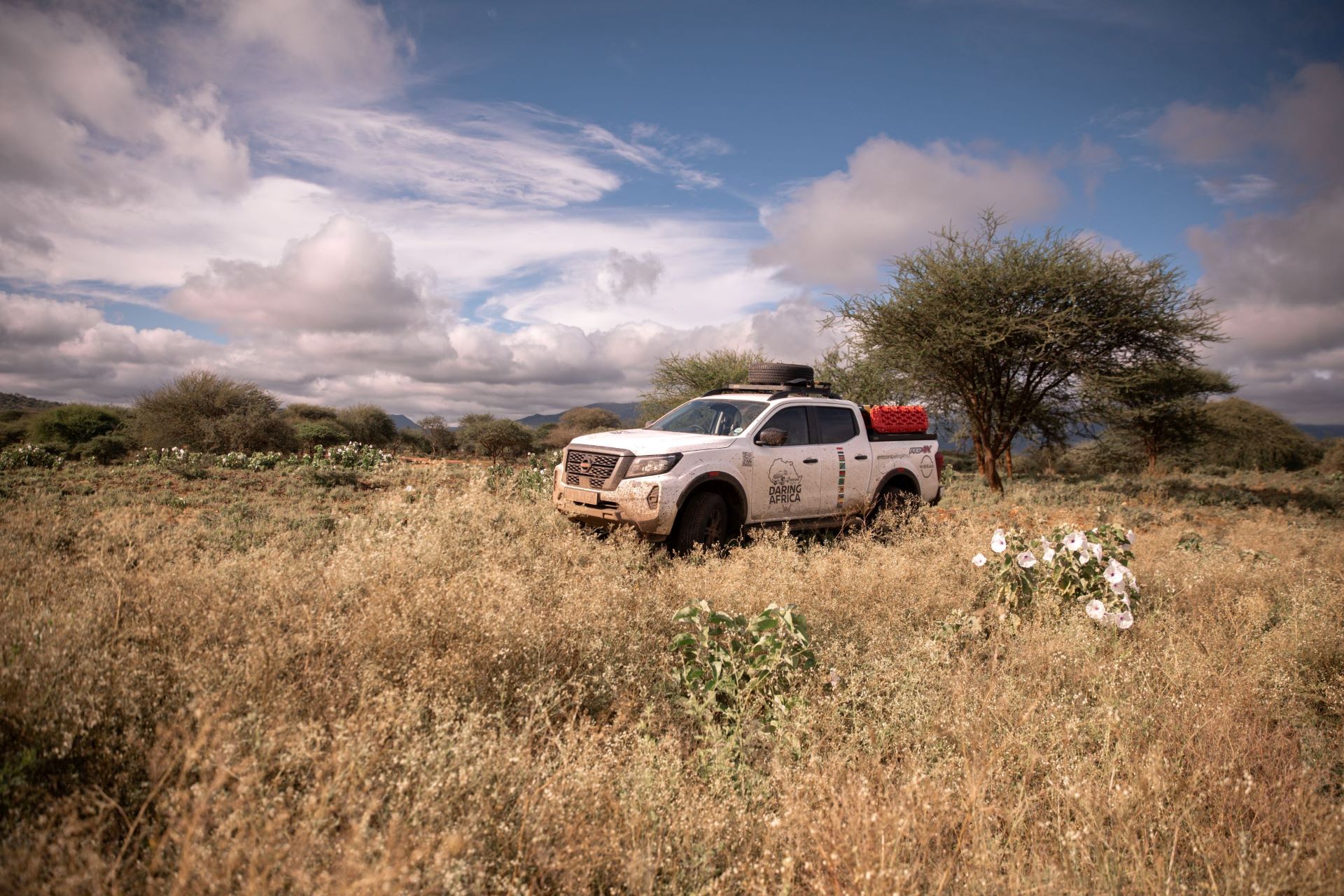- The ultimate in aerodynamics
- Mercedes-Benz 540 Streamliner: awakened to new life
- Highly complex project from Mercedes-Benz Classic
- Heralding the days of aerodynamics and high driving speeds
- Cd = 0.36 – exquisite for a vehicle from the 1930s
Mercedes-Benz Classic presents the Mercedes-Benz 540 K Streamliner to the general public – an exceptional vehicle that never ceases to amaze even the experts. Some 75 years after it was built, in 1938, the vehicle is back on the road.
This is a unique vehicle, created at the time with the potential to compete in the Berlin-Rome long-distance race, which was first of all postponed to 1939 and then cancelled completely due to the outbreak of the Second World War. From mid-1938 onwards, the streamliner was used by the German branch of tyre manufacturer Dunlop for the relentless everyday testing of high-speed tyres for fast cars. Mothballed after the war, following full restoration to its original condition it is now about to be thrust into the limelight once more.
“The 540 K Streamliner is a prime example of the innovative automotive vehicle design of the 1930s, combining as it does exceptional efficiency with sophisticated, perfect aesthetics. Its emotionally appealing design idiom radiates luxury and glamour”, says Gorden Wagener, Vice President Design at Daimler AG. “As such this extraordinary vehicle provides the ideal link to vehicle design as we understand it today, emotionally appealing as well as intelligent, and synonymous with sophisticated luxury.”
To which Dr Teddy Woll, head of the Aerodynamics/Wind Tunnels department at Daimler AG, adds: “Tremendous advances were made in aerodynamics during the 1920s, and the influence of this thinking was felt more and more in vehicle development during the 1930s. The 540 K Streamliner of 1938 embodies the prevalent understanding of aerodynamics at that time in impressive style.”
The 540 K Streamliner was developed in the years 1937/38 in the special vehicle production department of the Mercedes-Benz Sindelfingen plant, under the direction of Hermann Ahrens. From today’s perspective the vehicle would be described as a Gran Turismo styled coupé, although the conventions of the 1930s meant that the designers depicted this body shape as a streamlined saloon, or quite simply ‘Streamliner’. The perfection of the design as a whole and of numerous individual technical details evidenced by this trailblazing vehicle exemplifies not only the innovative strength of the Mercedes-Benz brand, but also its expertise in the development of one-off models that set a true benchmark in design, comfort, quality and customer benefit.
This special vehicle, with its powerful supercharged engine, is designed to accelerate rapidly to a high speed and then, thanks to the aerodynamic lines developed in the wind tunnel, to maintain that speed. The whole is then enveloped in a sublime, streamlined body made of lightweight aluminium. This, combined with its powerful powertrain system, makes the 540 K a truly unique vehicle.
Measurements made in the wind tunnel in May 2014 revealed a drag coefficient of Cd = 0.36 – exquisite for a vehicle from the 1930s. A direct comparison with a standard-specification 540 K Coupé makes clear the leap made here in terms of aerodynamics: the figure for the coupé is Cd = 0.57.
In a highly challenging and complex restoration project undertaken by Mercedes-Benz Classic, the vehicle has now been rebuilt to its original condition. “We launched the project in 2011 and have been pressing forward with it at full throttle ever since”, commented Michael Bock, Head of Mercedes-Benz Classic. “It offers outstanding evidence of our expertise in the handling of automotive history.” Technical skills, methods and materials of the period from which the vehicle originates were used. The search for background information in the archives produced important documentary evidence, with the end result a spectacular one-off vehicle. The car stands today as it would have been seen in public in 1938: a herald of the future, whose high driving speeds and exceptional performance are quite apparent even when it is stationary. A unique, avant-garde messenger from an era still characterised by traditional bodywork styling, which has sped its way straight into the modern age, and still somehow looks up-to-date, even today.





